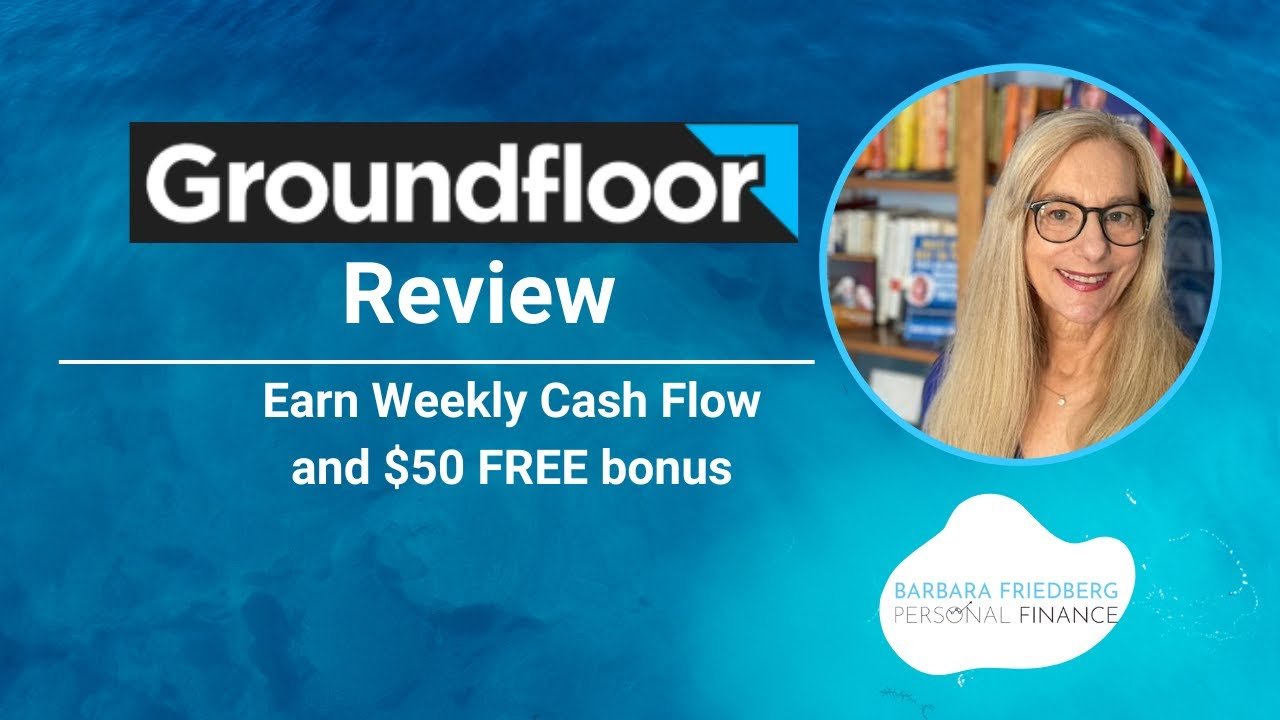Groundfloor is a real estate investment platform that offers short-term, high-yield opportunities through fractionalized debt investments. Unlike traditional crowdfunding platforms, it allows non-accredited investors to participate with as little as $100, making it accessible to a broad range of investors. The platform primarily funds residential real estate projects, offering returns based on loan repayments from property developers. With a unique risk-reward structure and a self-directed approach, Groundfloor provides an alternative to REITs and other real estate investment vehicles. Investors can review project details, risk grades, and expected returns before committing funds, adding a layer of transparency to the process.
Services and Features: What Does Groundfloor Offer?
Groundfloor is a specialized platform that does not offer traditional securities such as stocks, bonds, options and funds. Instead, Groundfloor specializes in a single form of alternative investment class: short-term real estate debt.
Here’s how it works. Borrowers apply to Groundfloor for a short-term real estate loan, typically between six months and 18 months in duration. They use these loans to buy or improve a piece of residential real estate for commercial purposes. Most borrowers on Groundfloor use this money to flip houses.
Groundfloor extends what’s known as a “hard money” loan. This means that the loan is backed by a physical asset which serves both as collateral for the loan and as the intended vehicle for repayment. For example, when a borrower takes their loan to flip a house they don’t intend to make payments out of their personal income like a traditional mortgage. Instead they intend to repay this loan based on the resale value of the underlying property.
Groundfloor then bundles this debt into a portfolio that its investors (you) can invest in. For example, you might buy $1,000 worth of the debt on 123 Main Street and $5,000 worth of the debt on 567 Broad Street. When you invest, you don’t actually purchase the debt itself. Instead you receive what’s called an LRO, a “limited recourse obligation,” that entitles you to repayment based on the underlying debt.
As the borrower makes interest payments, those are portioned out to Groundfloor’s investors on a pro-rata basis. You receive interest payments in proportion to the amount of any given portfolio you own. When the borrower repays the loan, you receive your investment back.
Fees: How Much Does Groundfloor Cost?
There are usually four types of fees to look out for when choosing a trading platform. You should look out for these when evaluating any investment or trading service:
- Trading fees: Any fixed charge attached to each trade that you make. This can come in the form of a flat fee or what’s known as the “spread.” This is when your broker charges you based on the difference, if any, between the buying and the selling price of an asset.
- Trading commissions: This is when a broker will charge you a percentage based on the volume or value of each trade.
- Inactivity fees: Any fees that the broker charges you for not trading, such as for keeping money in a brokerage account.
- Non-trading/Other fees: Any form of fee for trading on this platform not covered above. For example, a brokerage might charge you for making deposits into your brokerage account, taking money out of it or signing up for additional services.
Groundfloor is free. As far as SmartAsset can tell, this platform charges no fees, costs or commissions to the individual investor.
Instead, Groundfloor makes its money off its borrowers. When the platform extends a loan it charges the borrower between 2% and 4.5% in interest on the principal. The borrower also pays closing costs and application fees.
Effectiveness: How Well Does Groundfloor Work?

It is clear that this website was built with ease of use at the front of the firm’s mind. Groundfloor has an admirable simplicity to it, born in part out of the fact that it has so few moving parts. Groundfloor reasons that you really only need to do three things on its website: Add money to your account, review your current investments and buy into new ones. However, the site also has an “Education Hub” that features videos and articles about real estate investing and the real estate market in general.
Your account page on Groundfloor provides a list of new properties that you can invest in, with a splash of information about each one. Clicking through any given investment takes you to its details page, where you can find details about the project, the borrower and how much money everybody hopes to make. (That is literally included as an “After Repair Value” bar graph to show you just what a good idea any given investment can be.) Perhaps most importantly, a large and colorful letter grade tells you how creditworthy Groundfloor considers this project to be on a scale from A to G.
Assessing Risk
Now, the risk associated with real estate investment is not in and of itself a dealbreaker for Groundfloor’s business model. This platform advertises average returns of 10% or more, with most portfolios showing about a 10% rate average. Groundfloor’s debt-based structure provides a good form of income investing, while its emphasis on short-term loans means that your money isn’t locked up for years at a time.
However, make sure you approach a Groundfloor portfolio appropriately. Its business model is speculative and the assets underlying its debt-based securities are too.
Bottom Line

Groundfloor offers shares of short-term real estate debt. This can be a good way of getting some speculative income investments into your portfolio. This is an easy way into the real estate market, but the average retail investor should understand the risks associated with investing in different types of real estate projects before diving in.
Tips for Investing
- The speculative segment of your portfolio can be one of the strongest parts of your financial life. It certainly can be the most fun … if you plan it wisely. That’s why working with a financial advisor can be so valuable. Finding a financial advisor doesn’t have to be hard. SmartAsset’s free tool matches you with up to three vetted financial advisors who serve your area, and you can interview your advisor matches at no cost to decide which one is right for you. If you’re ready to find an advisor who can help you achieve your financial goals, get started now.
- One of the easiest ways to make sure your portfolio’s holdings are allocated so they reflect your risk tolerance, goal and time horizon is with an asset allocation calculator.
Photo credit: ©iStock.com/Khanchit Khirisutchalual, ©iStock.com/VioletaStoimenova, ©iStock.com/gremlin

